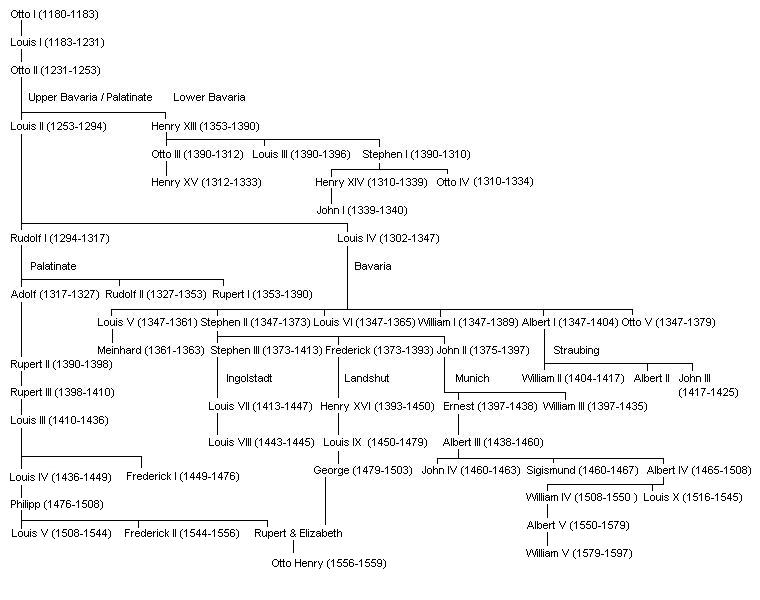A Quick Guide to Bavaria’s Most Important Family: The Wittelsbachs
Welcome to a journey through the rich tapestry of the Wittelsbach family tree, a royal lineage blending power, art, war, and romance across centuries and borders.
The Wittelsbach family’s enduring legacy is a testament to their profound impact on European history. Their web of alliances, cultural contributions, and political influence shaped nations. As patrons of the arts, they adorned Bavaria with architectural marvels and artistic treasures that captivate visitors today. Their story is not just royalty but a narrative of resilience, creativity, and a dynasty transcending time and borders.
From Bavaria to across Europe, the Wittelsbachs left a mark, shaping history, building landmarks, and intertwining their destiny with other royal families. Let’s unravel the tales hidden within their family tree.
Who Were the Wittelsbachs?

The Wittelsbachs, one of Europe’s oldest royal dynasties since the 12th century, ruled Bavaria for over 700 years. Their influence extended beyond Bavaria’s borders, with members becoming kings, queens, dukes, and electors. They were also patrons of the arts, enriching Bavaria’s heritage with their cultural love. Their story is a riveting saga of triumphs, tragedies, and an enduring legacy.
Key Figures in the Wittelsbach Dynasty
The family tree boasts diverse and notable figures:
- Ludwig I of Bavaria: Known for his patronage of arts and neoclassical architecture in Munich. Abdicated in 1848 amid political turmoil, his cultural contributions remain pivotal.
- Maximilian I Joseph: Bavaria’s first King from 1806, modernized the state with infrastructure and educational reforms, marking its transition to a kingdom.
- Ludwig II of Bavaria: The “Fairy Tale King” famed for dreamy castles and an eccentric life blending fantasy and tragedy.
- Queen Elizabeth of Hungary: Renowned for her charity and canonized as a saint for her benevolence.
- Otto I, Duke of Bavaria: Founder of the dynasty, his reign marked the beginning of the Wittelsbach era.
- Ludwig III: The last king of Bavaria, abdicated in 1918, signifying the end of Wittelsbach reign, though their influence persisted.
The Wittelsbachs’ European Influence

Their influence extended beyond Bavaria, with family members becoming kings and queens across Europe. Through strategic marriages, they intertwined their lineage with other royal families, influencing European politics during pivotal periods such as the Reformation and Counter-Reformation. Notable examples include:
- Holy Roman Emperors: Louis IV, who reigned from 1314 to 1347, extended his rule over Central Europe.
- Electors of the Holy Roman Empire: As one of the seven prince-electors, the Wittelsbachs wielded significant political authority in electing the Emperor.
- Kings of Bohemia: Their alliances allowed members to ascend to the throne of Bohemia, expanding their influence into Central Europe.
- Cultural and Artistic Patronage: Renowned for their support of arts during the Renaissance and Baroque periods, their legacy in art, architecture, and music continues to shape European cultural development.
Castles and Crowns: The Wittelsbach Legacy
Their lasting legacy is evident in Bavaria’s cultural heritage, with iconic landmarks like Neuschwanstein Castle and Munich Residenz. Their coat of arms, a blue and white lozenge pattern, symbolizes Bavaria’s identity.
The Wittelsbach Family Today

Franz, Duke of Bavaria, is the current head of the Wittelsbach family. Though he holds no official power, he remains a respected cultural and historical figure. Born in 1933, Franz is dedicated to preserving the family’s heritage and promoting Bavarian culture. He is actively involved in maintaining and restoring the family’s historic properties and continues the tradition of supporting the arts.
The Wittelsbach coat of arms, featuring a blue and white lozenge pattern, remains a symbol of Bavarian identity and pride. Franz also supports historical research and education, ensuring the family’s legacy is celebrated and remembered.
Properties Known to the Wittelsbach Family in Bavaria
They are associated with numerous historical properties, including Neuschwanstein Castle, Hohenschwangau Castle, Munich Residenz, Nymphenburg Palace, and Schleissheim Palace, each significant in Bavarian history.
Wittelsbach Family Tree Diagram
To visualize their lineage, here’s a simplified family tree from Otto I, Duke of Bavaria, to notable Electors Palatine

The Wittelsbach family remains a symbol of Bavarian heritage and pride, their history celebrated throughout the region. So you see the story of the Wittelsbach family is the story of bavaria, a story that still continues until today. If you would like to visit the castles form the Wittelsbach book your tour today!
